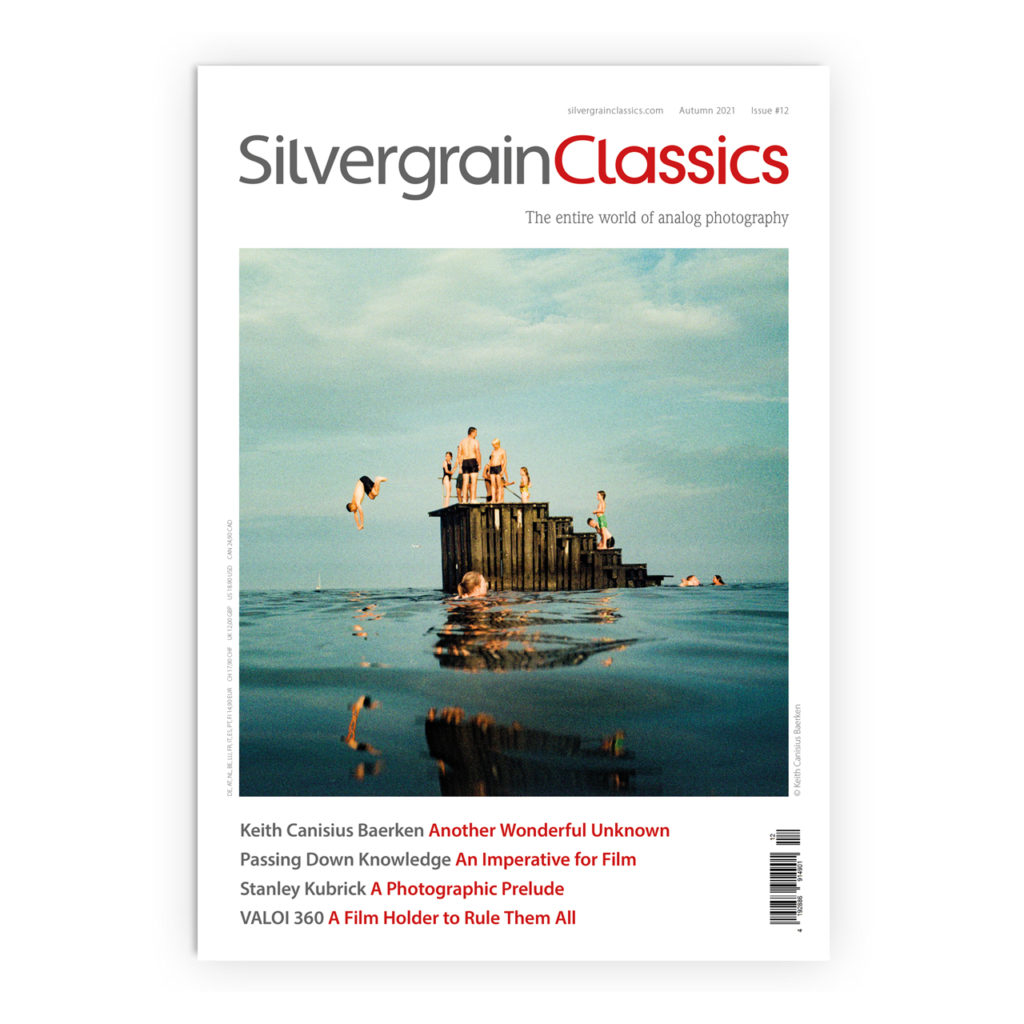Improved RA 4 Reversal Printing – Jeff Neale
The return of Cibachrome? Not quite. We talk to Canadian photographer Jeff Neale has been improving the RA-4 Reversal Process.
By Christopher Osborne.
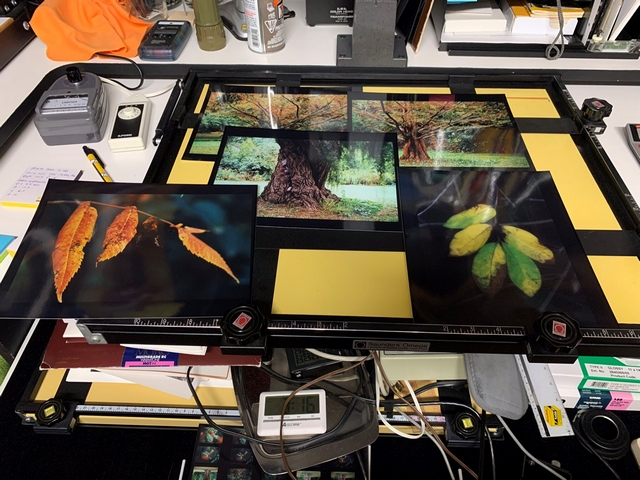
Some of Jeff Neale’s recent RA-4 reversal prints look so good that they could have been made with Cibachrome..
The return of Cibachrome?
The return of Cibachrome? Sadly not. Although looking at Jeff Neale’s stunning colour reversal prints, one could be excused for thinking that analogue photographers have had a second Christmas this year.
It used to be possible to print from slide films such as Kodachrome and Ektachome. In 2008 Kodak stopped manufacturing R-3 positive to positive paper and in 2011 Ilfochrome (the post-1992 name for Cibachrome) was finally withdrawn from the market. To make up for the lack of products photographers have been experimenting with RA-4 reversal. This is a hack of the process to print from colour negatives, and while many people have made interesting work, the results are easy to identify through a distinctive high contrast. (Jeff described this as looking like prints from slides that were beaten up by the digital age during the interview)!
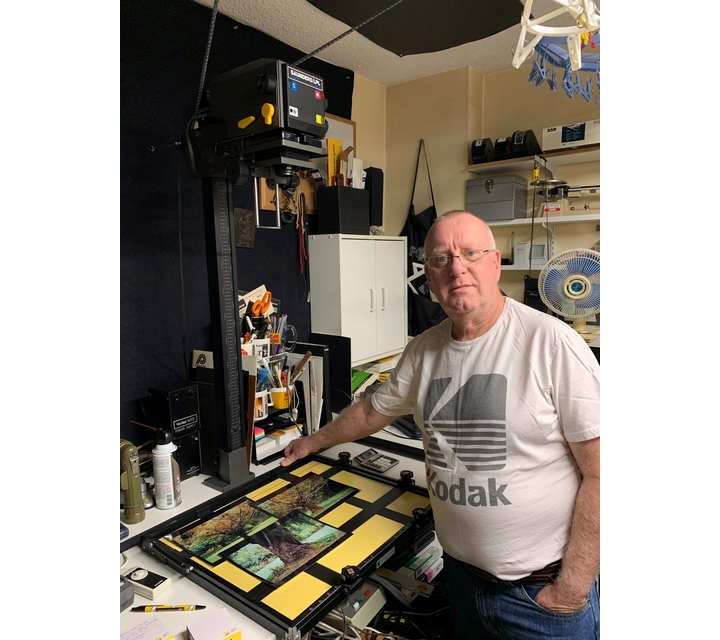
Jeff Neale in his darkroom.
RA-4 Reversal process recap
For those of you who are not familiar with the RA-4 reversal process, here is a quick summary. The enlargement is made in the same way as a print from a colour negative, although additional filtration is required to allow for the fact that colour transparency film does not have an orange mask.
1st Developer
The print is then developed in B&W developer in the dark. Once the print has completed this first development, then it is washed and exposed to white light. This exposes the remaining silver halides in the paper.
Colour Developer
The print is then developed in a colour developer. As the 1st developer has turned the parts of the print exposed under the enlarger to silver, the colour developer only acts on the opposite areas, the areas exposed to white light during the wash step. As silver crystals are created in this step, they trigger the creation of colour dyes.
Bleach Fix (Blix)
The Bleach Fix (Blix) then turns all of the metallic silver back into silver halides. This is dissolved away by the Fixer component of the Blix.
At the end of the process, all that is left is the colour dyes formed in the colour developer step.
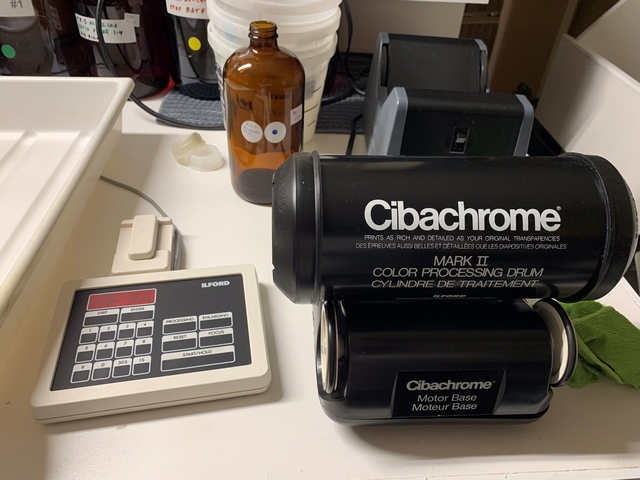
Jeff Neale uses a colour print processing drum for the steps that require complete darkness.
Jeff Neale’s improved RA-4 Reversal process
Jeff Neale has been experimenting with solving the problem of excessively high contrast in his Ontario darkroom. He has developed a two-step method that solves this problem.
Firstly, the print is pre-flashed. (Pre-flashing is much more common in B&W printing and where it is used to reduce contrast). Then the print is developed in a very low contrast Black & White developer to further curtail the contrast.
Pre-flashing
Interestingly, Jeff has found that there is an optimum pre-flash time. Flashing beyond 12 seconds with his setup leads to a reduction in the blacks of the final print, and the prints start to look muddy as the D-Max reduces.
Jeff is using a second enlarger to pre-flash. He has the head on his Sanders/LPL enlarger as high as possible, a 50mm lens at f16 and the colour head set to Y120 M100 (yellow and magenta settings). In Jeff’s setup, the optimal pre-flash is 12 seconds.
If you do not have a second enlarger, then I would suggest that you make a post-flash after the main exposure. You will still need to remove the negative from the enlarger and adjust the colour filtration to the correct colour settings.
Exposure
The paper is then transferred to a second enlarger for exposure. Jeff typically has exposure times of 10-20s when making 8×10 inch (20 x 25 cm) prints.
Processing
Jeff recommends loading the exposed paper into a colour print processing drum for the first step. Washing and re-exposure have to be done in a tray.
Pre-wash
The print is pre-washed at 40 degrees C/103 degrees F.
First Developer
The low contrast developer is Part A of Beer’s Two Solution Variable Contrast Developer. The formula for this developer can be found in Steve Anchell’s “The Darkroom Cookbook”.
Water 750ml (50 C/125F)
Metol 8g
Sodium Sulfite 23g
Potassium Carbonate 21g
Potassium Bromide 10% solution, 11ml
Water to make 1 litre
The working solution is made 1:1 ratio from the stock solution. Development time is 1min:15s.
This step could be done in a tray in total darkness, however, Jeff uses a colour print processing drum as this allows processing in daylight.
Stop bath
The print development is stopped using a very weak acidic stop bath.
Wash
The print is washed in a tray for 3 minutes while being exposed to white light. Jeff has a dedicated light for this about 1 metre above the tray.
Colour Developer and Bleach Fix
Colour Developer and Blix are processed at regular RA-4 times at 35 degrees Celsius. At this temperature, each step takes 45 seconds. Jeff bought a whopping 110-litre Fuji RA-4 kit and is slowly working his way through this.
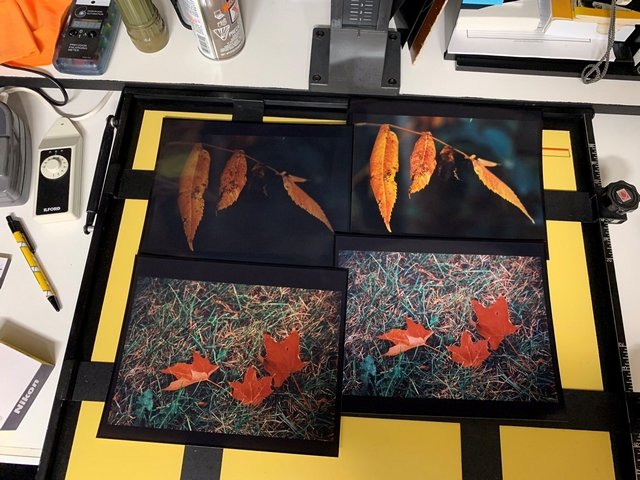
Sample prints showing how D-Max is reduced with too much pre-flashing (Left).
Further thoughts
While the results are very impressive, Jeff is keen to point out that there is still a small colour mismatch. Reds and Greens are reproduced nicely, however, there is some movement from Blue towards Cyan. (This is because the relative colours in colour negative film are not evenly recorded because of the effect of the orange mask).
The next area for experimentation is to try adding Sodium Sulfite to retard the colour developer.
That said, the results are extremely good.
Jeff makes an interesting observation while showing me some prints he has made from negatives together with others made from slides. “Cibachrome is always credited for producing vivid colours. However, my RA-4 Reversal prints have far more vivid colours than the straight RA-4 prints. Perhaps the vivid colours come from slide film, and not from the printing process”?
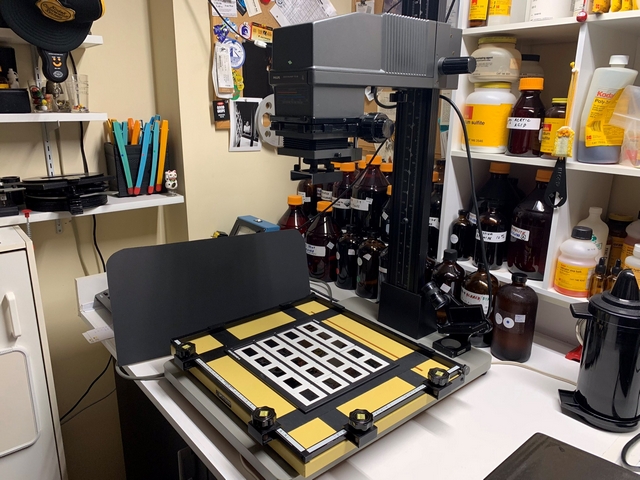
Making Cibachrome quality contact prints from slides.
Images © Jeff Neale 2023.
You might also be interested in this previous SilvergrainClassics article on Eliza Stephens https://silvergrainclassics.com/en/2022/11/eliza-stephens-on-photography-and-the-darkroom/
You can find an index to the entire collection of SilvergrainClassics magazines here https://silvergrainclassics.com/en/magazine/index-of-articles/

